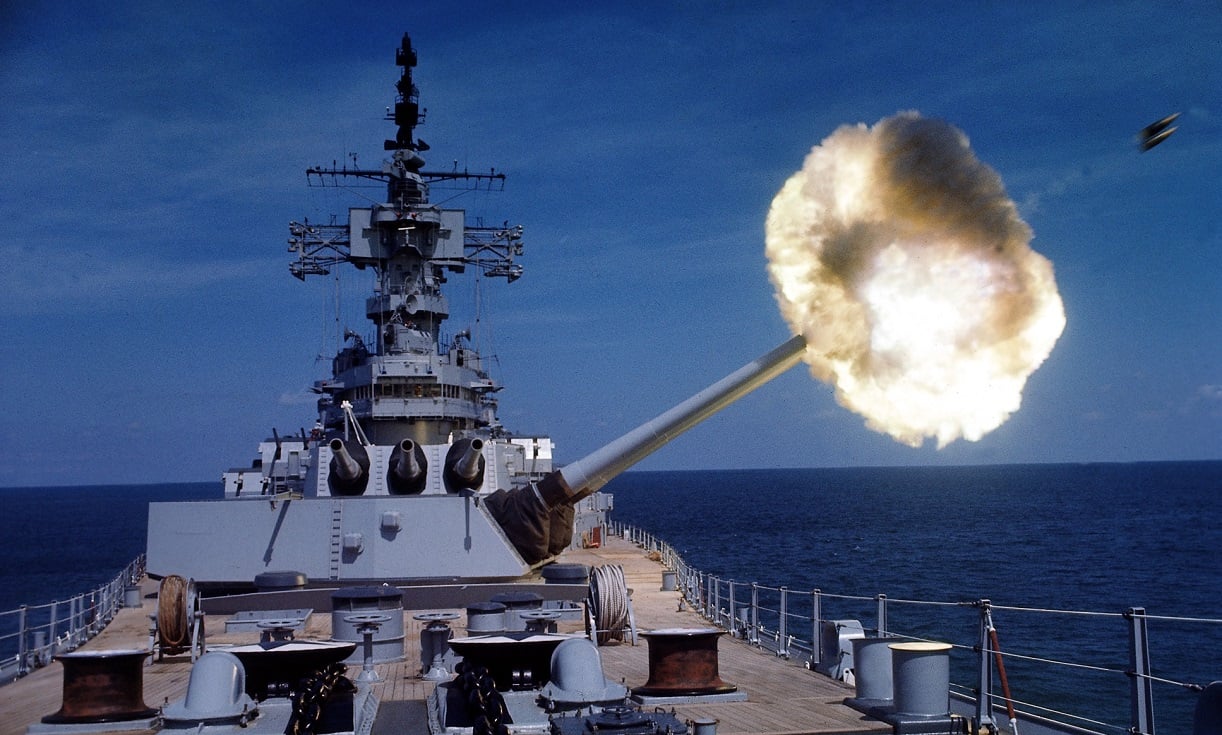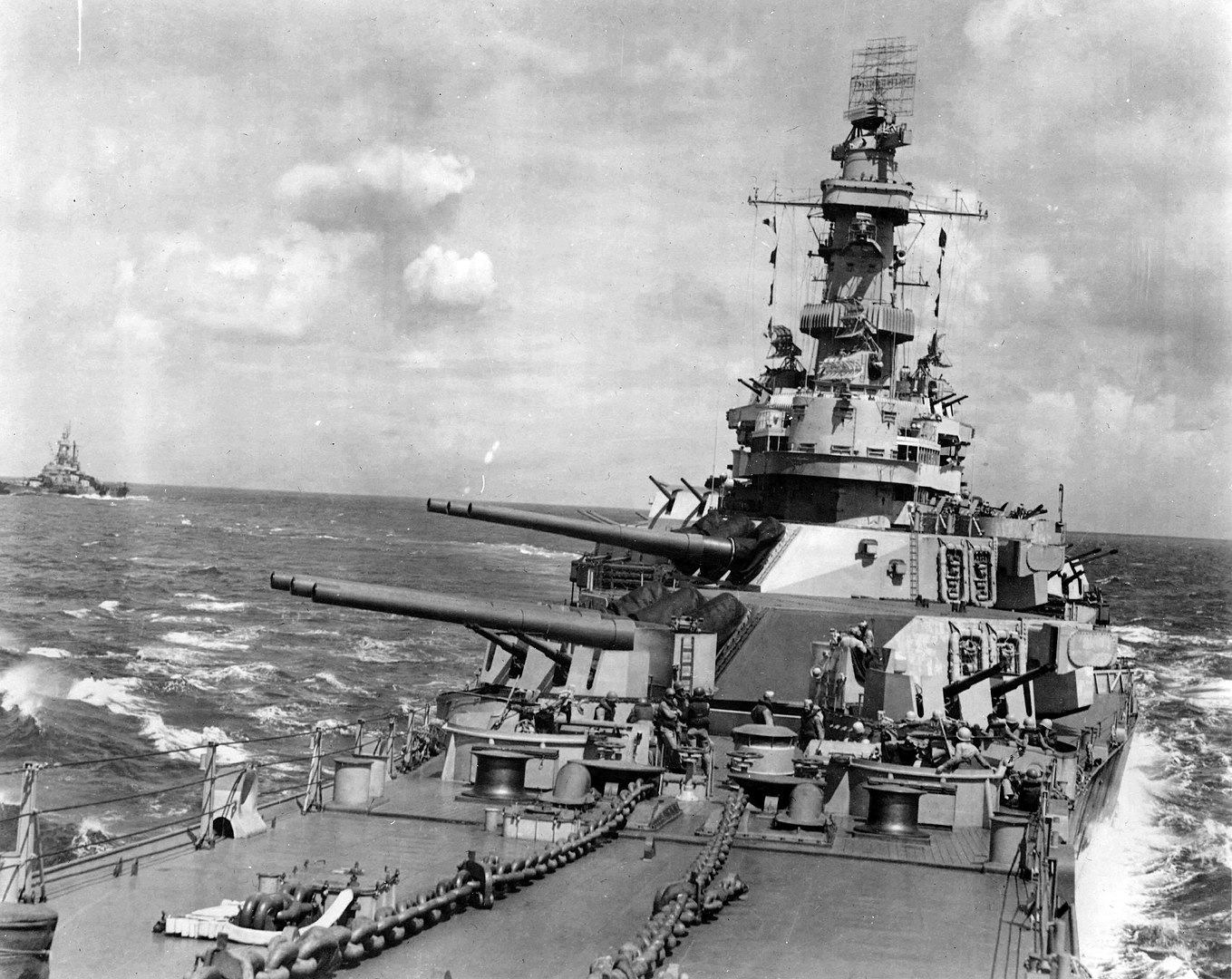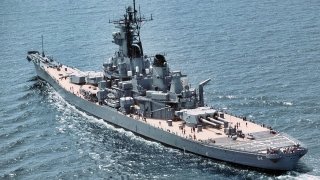The U.S. Navy's Iowa-Class Battleship Nightmare, Explained
The Iowa-class battleships, designed to counter the Imperial Japanese Navy in the mid-20th century, became iconic for their immense size, powerful armament, and storied service history.
Summary and Key Points: The Iowa-class battleships, designed to counter the Imperial Japanese Navy in the mid-20th century, became iconic for their immense size, powerful armament, and storied service history.

-Measuring 860 feet long and displacing 58,460 tons, these battleships were the most heavily armed warships ever sailed by the U.S. Navy, featuring nine 16-inch Mark 7 naval guns and twenty 5-inch Mark 12 guns.
-They served through World War II, the Korean War, Vietnam War, and Operation Desert Storm. Despite their legacy, the Iowa-class battleships are now museum pieces, as modern defensive technologies make their continued operation impractical.
From WWII to Desert Storm: The Remarkable Journey of the Iowa-Class Battleships
The battleship is an iconic warship, amongst the first people associate with naval warfare. And the Iowa-class is an iconic battleship, the last the US ever commissioned, and in the opinion of some, retired too soon.
Introducing the Iowa-Class Battleship
The Iowa-class was designed in the middle 20th century to deal with the era’s most pressing naval threat: Imperial Japan. Originally, the Iowa was designed to intercept fast Japanese ships like the Kongo-class – while also being able to join the battle line and pound coastal positions with immense firepower.
The Iowa was recognizable for its size. At 860 feet long, with a beam of 108 feet and a draft of 37 feet, the Iowa was about 80 percent as long as a modern supercarrier. The Iowa displaced 58,460 tons, after being designed around the “elevator clause” of the Second Lond Naval Treaty. The elevator clause adjusted the initial parameters of the treaty, which capped battleship displacement at 45,700 tons, allowing for more displacement after Japan succeeded from the treaty and began building larger battleships.
In addition to impressive size, the Iowa featured impressive firepower. Actually, the Iowa was the most heavily armed warship that the US Navy has ever sailed. The primary armament was nine breech-loading 16-inch (406mm)/50-caliber Mark 7 naval guns.
The Mark 7 guns were held within three 3-gun turrets. Each Mark 7 gun measured 66 feet long and weighed 239,000 pounds. The Mark 7 fired 2,700-pound armor-piercing projectiles with a muzzle velocity of 2,500 feet per second at a range of 24 miles. In sum, the Mark 7 was a massive gun that fired a massive projectile – and the Iowa had nine of them.
The Mark 7 wasn’t the only gun aboard the Iowa; additionally, the Iowa carried twenty 5-inch (127mm)/38 caliber Mark 12 guns. The Mark 12 guns were so successful that they were added to every US warship built between 1934 and 1945.

To propel the massive Iowa, each ship was outfitted with eight Babcock & Wilcox boilers and four double reduction cross-compound geared turbines; each turbine drove a single shaft. The powerplant was good enough for 212,000 horsepower and 32 knots per hour of speed. To fuel the powerplant, the Iowa carried nearly 9,000 tons of fuel, which allowed for operation within a range of 18,300 miles.
A storied service history
While designed for service in World War II, the Iowa-class served admirably through the Korean War, Vietnam War, and even in Operation Desert Storm – a remarkable run. Still, some believe the Iowa should have been kept in service.
The notion was even memorialized in the film Battleship, in which the Iowa-class USS Missouri is resurrected to battle invading aliens off the coast of Hawaii.
But don’t kid yourself. The Iowa class is today right where it should be: serving as museum pieces.
For one, the Iowa-class is pushing one hundred years old. Maintenance fees and upgrade fees would start to pile up. And what would the justification be for paying so much to keep a nearly one-hundred-year-old vessel afloat?

Battleships were appropriate in the middle of the 20th century. However, given the defensive technologies available today, a battleship would likely have a difficult time surviving in a contested environment. Off the coast of China, for example. Maybe in the Taiwan Strait, within range of China’s ever-increasing stockpile of hypersonic missiles.
About the Author: Harrison Kass, Defense Expert
Harrison Kass is a defense and national security writer with over 1,000 total pieces on issues involving global affairs. An attorney, pilot, guitarist, and minor pro hockey player, Harrison joined the US Air Force as a Pilot Trainee but was medically discharged. Harrison holds a BA from Lake Forest College, a JD from the University of Oregon, and an MA from New York University. Harrison listens to Dokken.
Image Credit: Creative Commons.


